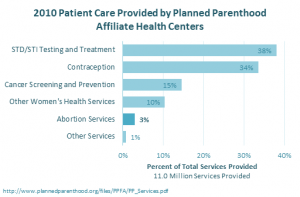Introduction
From my personal view, most people’s feelings on imprisonment can be summed up in one of two ways: (1) convicted individual did the crime, so they must do the time, or (2) crime can be fixed if we focus on individual reformation and restoration.
However, what of the cases where a convicted individual has done their time and has to be integrated back to society? In many cases like this, it is often difficult for an individual to go back to “normal” life. Records of their crime has to be known to employers, landlords, banks, etc. Although these requirements are in defense of safety for the public (and rightfully so) it not only hinders a convicted individual’s right to privacy but also encourages the ongoing stigma in society that says convicted criminals will only continuously commit crimes and will always be dangerous.
So what’s this bill and what does it mean?
The H.R.1672 of 2015-2016, or the REDEEM Act, attempted to provide a process for sealing nonviolent juvenile and/or criminal offenses.
With sealed records, an individual with nonviolent criminal offenses, when out of prison, can have an easier time (1) securing / getting a job and (2) receiving welfare benefits such as temporary assistance for needy families [TANF], supplemental nutrition assistance program [SNAP].
Though these benefits can only be given for people with nonviolent offenses who meet the following criteria:
- The individual is willing to attend, is participating in, or has completed substance abuse treatment.
- The individual is a parent with a child or children in custody.
- The individual is suffering from serious illness.
- The individual is pregnant.
- The individual is in compliance with their sentence.
Why didn’t it go through?
To be honest with you, I have no idea why HR 1672 (and other bills similar to it at the time) did not make it past the introduction phase in the House or Senate.
I can only speculate to the following:
- The wording was too vague.
- The bill does not address which nonviolent crimes would fall under it nor does it address situations when both nonviolent and violent crimes are charged to a convicted individual.
- Authorization for records is not specified. For example: if an organization already was in possession of a person’s (partial or complete) criminal record and then that criminal record is legally sealed, what happens to that organization’s possession of said record?
- The process involves adding more paperwork that needs to be filed and sorted through. The Department of Justice needs to maintain open and sealed files as well as accurately working with those being filed into the system. It also requires for a vast communication network across many systems: not only the Department of Justice but also background check organizations, businesses, etc.
- Juvenile records already have the capability to be expunged once a juvenile reaches adult age (15-18 years old, depending on the state).
What could be done to make it go through?
First, if this bill were to come back, hopefully there will be written specific qualifications for:
- what crimes (and/or combination of crimes) is okay to be sealed,
- who has authority to possess, distribute, and access sealed criminal records,
- why an authority or individual can access sealed records, and
- when the hard date for sealing documents from that point on will be [though this would leave out older convicted individuals].
Secondly, should this bill (or any for that matter) be presented to the United States government again, it would be helpful if you, the reader, could inform your views of such matters to your representatives in office – either through direct contact or through the lovely app Countable.
Thirdly, educating yourself further on issues surrounding incarceration and advocating for whatever they are goes a long way in spreading awareness, attention, and intrigue into what is being spoken about.
